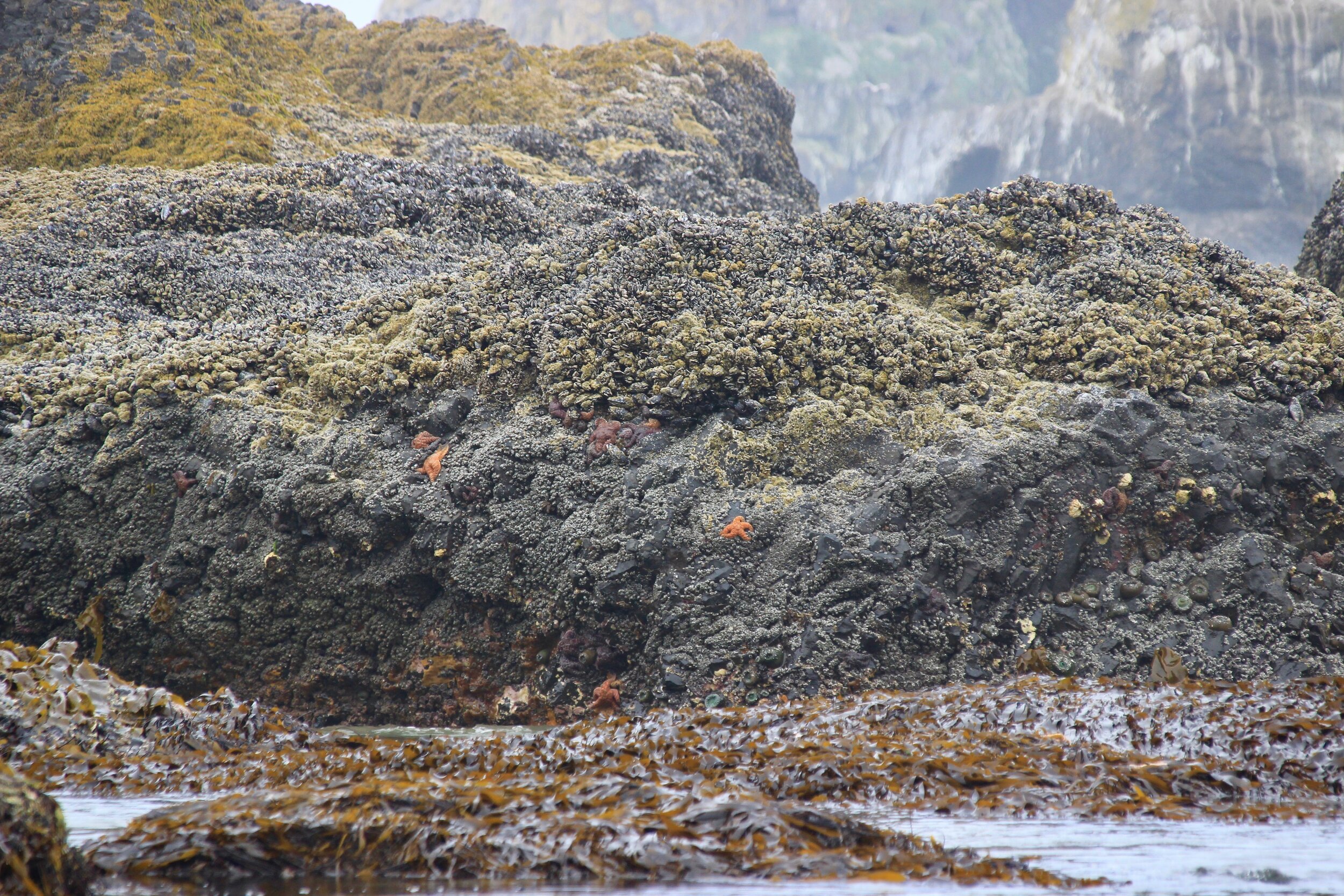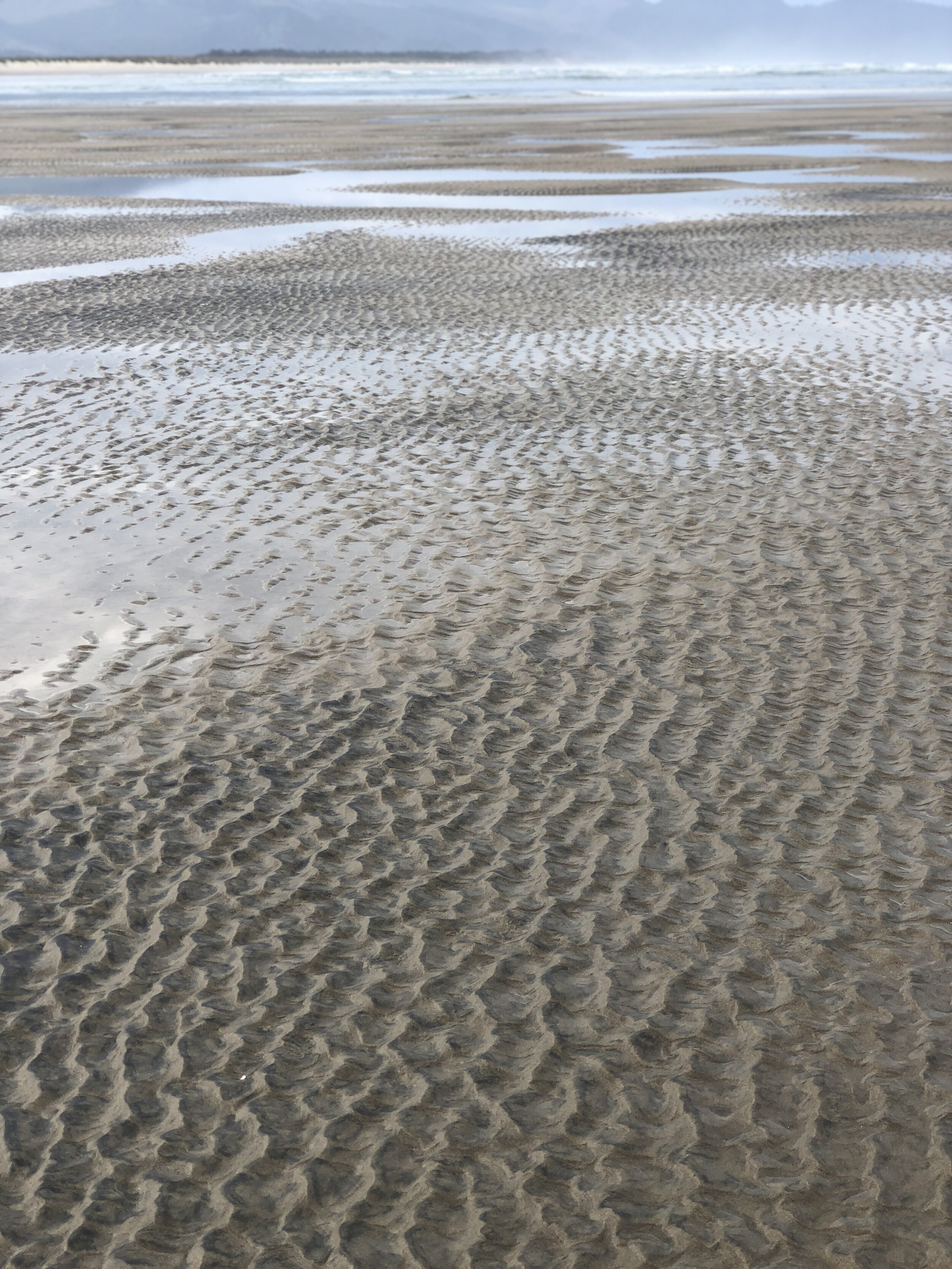What I’m Learning - May 2020
The Mollusk Theme Continues
Don’t tell the authorities, but when our landlord asked if we wanted to stay in a private cottage on the Oregon Coast for free, it was too hard not to say yes please. In less than a week’s notice, we drove ten hours north to quarantine there for two weeks. (We were very responsible, I promise!) It wasn't the hike to Machu Picchu we'd planned, but as far as consolation prizes go, it was pretty darn spectacular.
Obviously, I’m not the first person to learn from nature. Especially the ocean. And after being stuck in an apartment for months besides the occasional trip to the grocery store and a crammed city park, my atrophied senses were primed to be dazzled by a goldfish. But dazzled, they were. And learn, I did.
But first, what’s an essay about a trip without some photos? Behold, the jaw-dropping, epic MAJESTY of Oceanside, Oregon... and some pics of my dog. She’s not exactly majestic, but she sure is cute.
As you can see, it does not suck on the Oregon coast.
And while everything I saw in those two weeks was humbling (the birds, the waterfalls, the sunsets, the full rainbow), it was the small, seemingly immobile organisms that moved me the most.
When we wandered around the beach at low tide, I’d never seen anything quite like what clung to the boulders. The mussels clinging to the rock. The barnacles clinging to the mussels. The algae clinging to the barnacles. (Last month, I wrote about a haiku of a snail, so I clearly have a thing for weird little primordial-like creatures these days.)
So, yep, while everyone else was taking photos of the waves and horizon, I was mesmerized by those ancient, encased rocks. In fact, as I stood there with them, I had a pretty profound experience.
Mussels, starfish, anemone & more clinging to the rocks.
The clinging is what got me. These organisms are briefly exposed for a couple hours a week—which brings danger in the forms of seagulls and humans with yellow buckets—but otherwise they survive a constant beating of the ocean. Wave after wave after wave. Still, they hang on. In a moment, I could hold in the paradox of how overwhelmingly fragile and resilient their existence is. How these creatures seemed so unanimated yet so powerful all at the same time. I was in awe of how these simple organisms endured the most volatile conditions of the sea. It’s like I could feel their survival instincts: it was life holding on for dear life.
And isn’t that what writing is?
I’ve already written about how bafflingly pointless writing a book can feel. There’s always the relentless fear that the book might not be good, or even if it is, conditions just might not be right to publish it. Writing can sure feel like clinging to a rock, going nowhere, surviving the ocean’s waterboarding, hoping not to get plucked and tossed into God’s giant yellow bucket every time you get a breath of air.
Sometimes, I think about how easy it would be to erase a year’s worth of work. 65,000 words, painstakingly added keystroke by keystroke, all into a single Word document. Countless hours. Easily lost with just a few clicks. I have a writing partner who prefers to write her first draft by hand. I’ve asked her, jokingly but kinda not, if she sleeps with the pages under her pillow.
But within the fragile effort, there are whole conversations. Relationships, ideas, conflicts, failures, questions and realizations. A life of a girl that I’ve gotten to know over the last couple years, just by writing her story. A whole resilient life within some flimsy framework.
And isn’t that what our life is? Especially right now?
Covid has been a terrifying reminder of how fragile it all is. Something invisible to the naked eye has changed our world overnight. The loss of jobs, businesses, and livelihoods—poof. The body count—rising and sobering. Even if we haven’t been sick or laid off, it’s hard to ignore the shakiness in our knees.
But each day we can also find the evidence of resilience. The health workers, the delivery people, the money raised, the businesses pivoting. The people singing together from their windows. And we share these stories on TV and online. We discuss these stories with our family and friends on Zoom. Because stories can show us our resilience.
And so what I’ve learned is that, as writers, we can create resilience. It depends on the story we want to tell. But even if someone writes the world’s most hopeless story, isn’t sitting down to write and share it still an exercise in hope?
Starfish welcomed back from a three year absence.
Back on the beach, I was particularly taken by the starfish. (I was so surprised to see them; ignorant me, I thought starfish were only in the tropical environment of the Caribbean or something.) I got the life-clinging sense from them the most. Their bright and deep colors gave off this visual pulse; it’s easy to sense the aliveness coursing within. The way they wedged themselves into and over other things and each other, you could tell they had the desire to survive just like their more neurologically advanced counterparts (like us).
Later, I learned from my landlord that the starfish have only recently reappeared. She told me that there used to be hundreds and hundreds of starfish on the rocks, but some sort of bacteria wiped them out from the area. Three years of a completely starfishless beach. Because they affected me so much, it was difficult to even imagine the area without them. They seemed so important, so crucial, to the whole picture.
But this year, the starfish came back. Slowly but surely. A half a dozen here or there, emerging from the decimation.
For whatever reason, they’re still holding on.
- Tess Canfield, May 2020 via The Latest



















